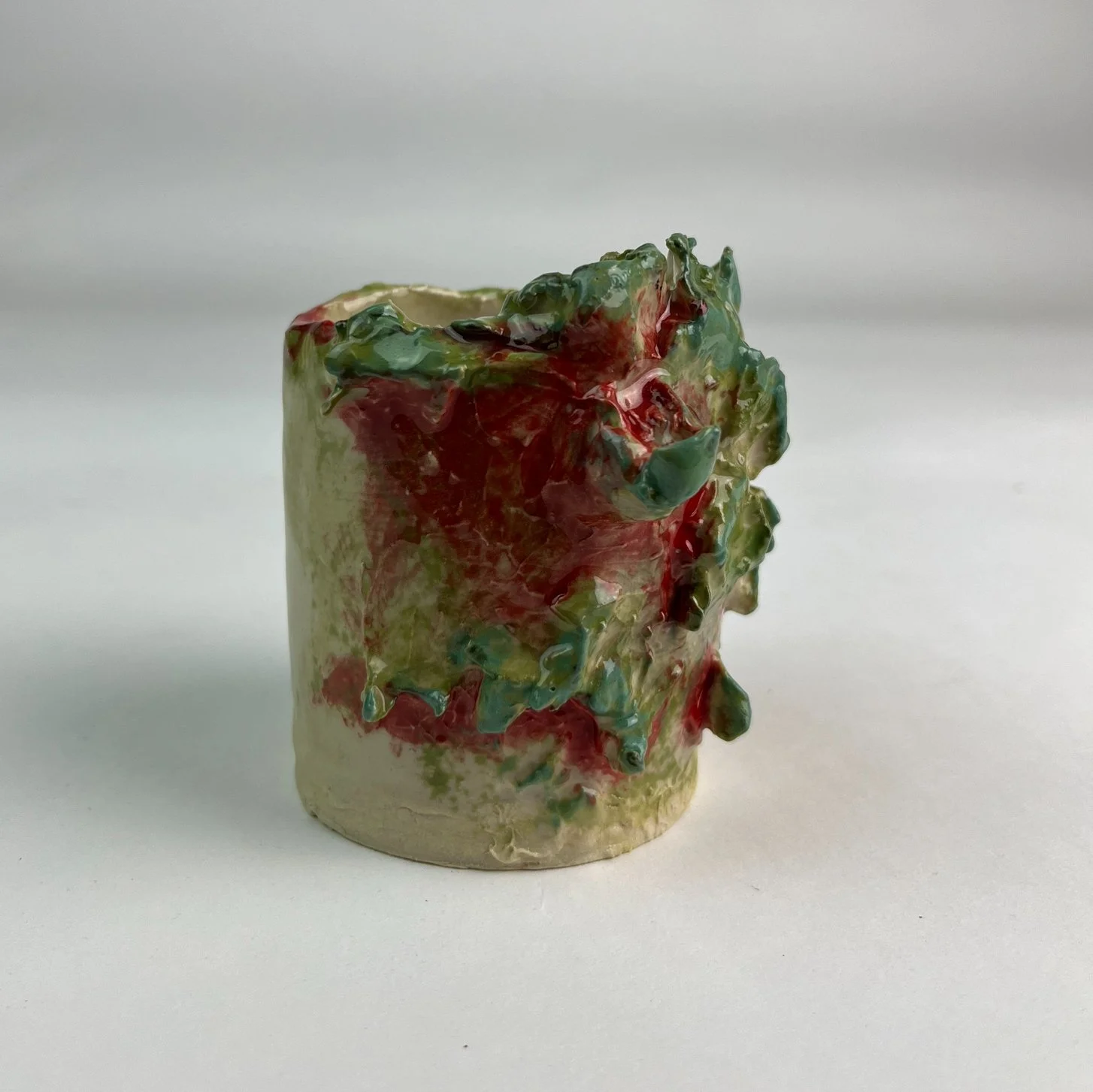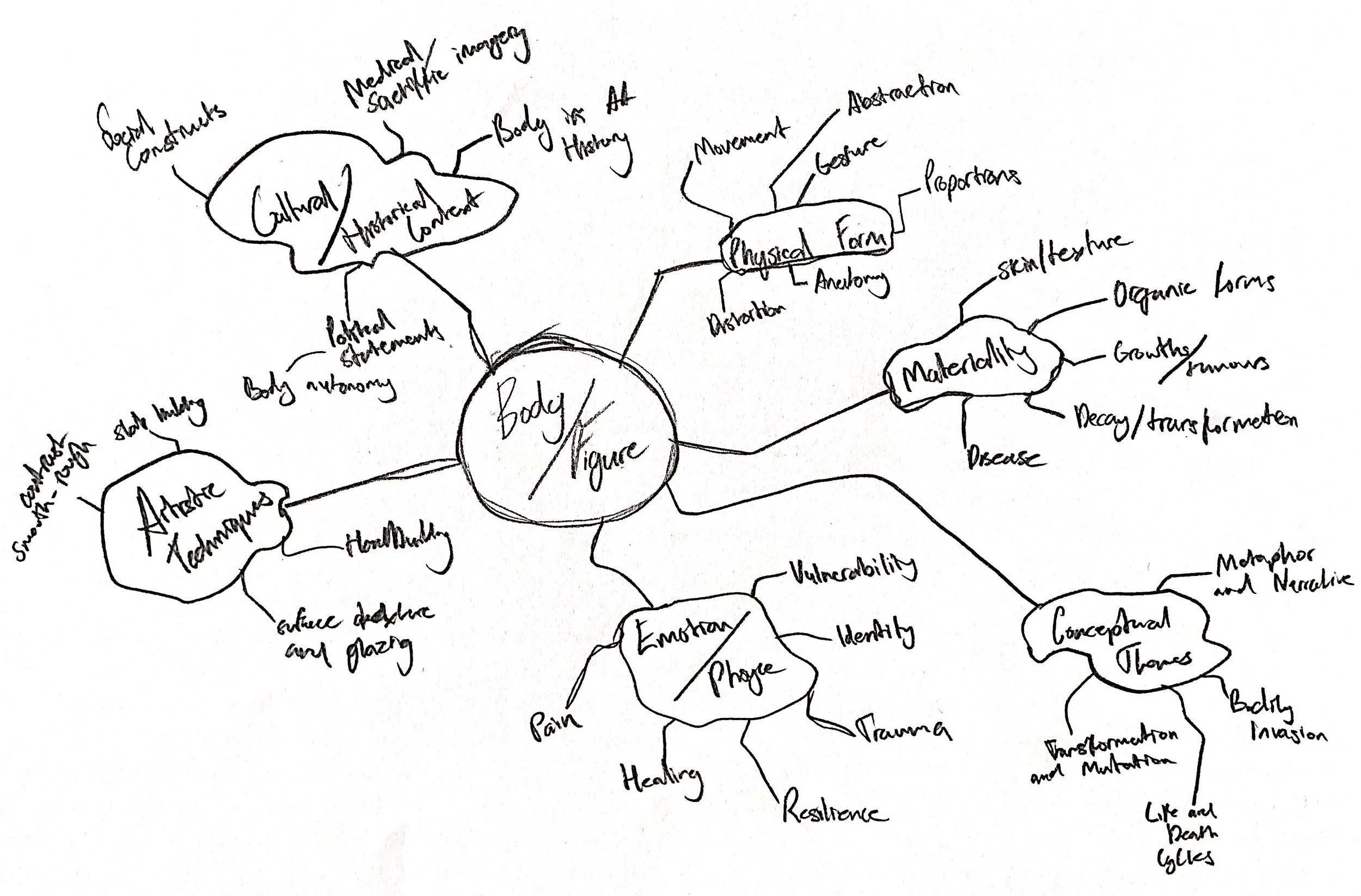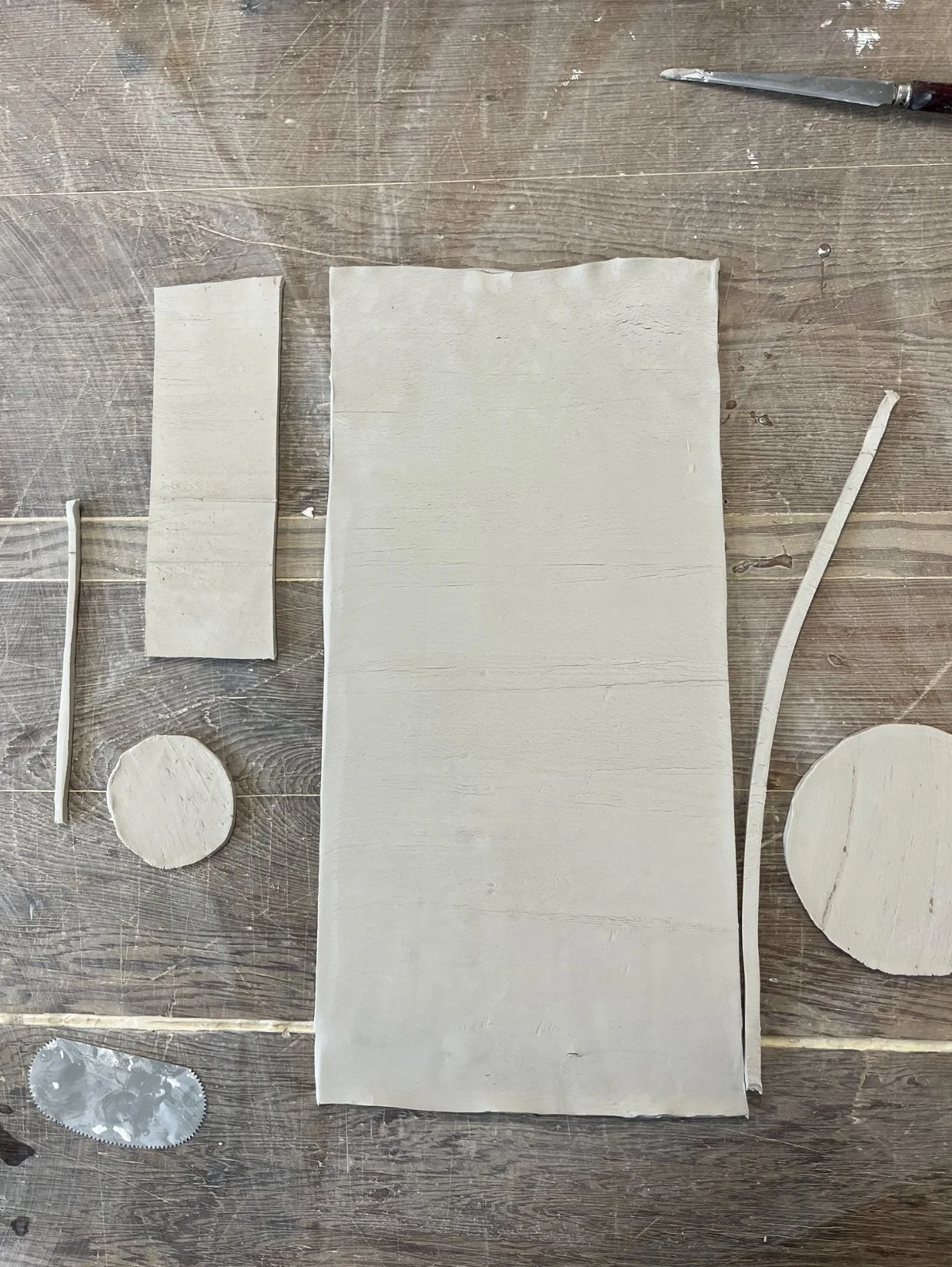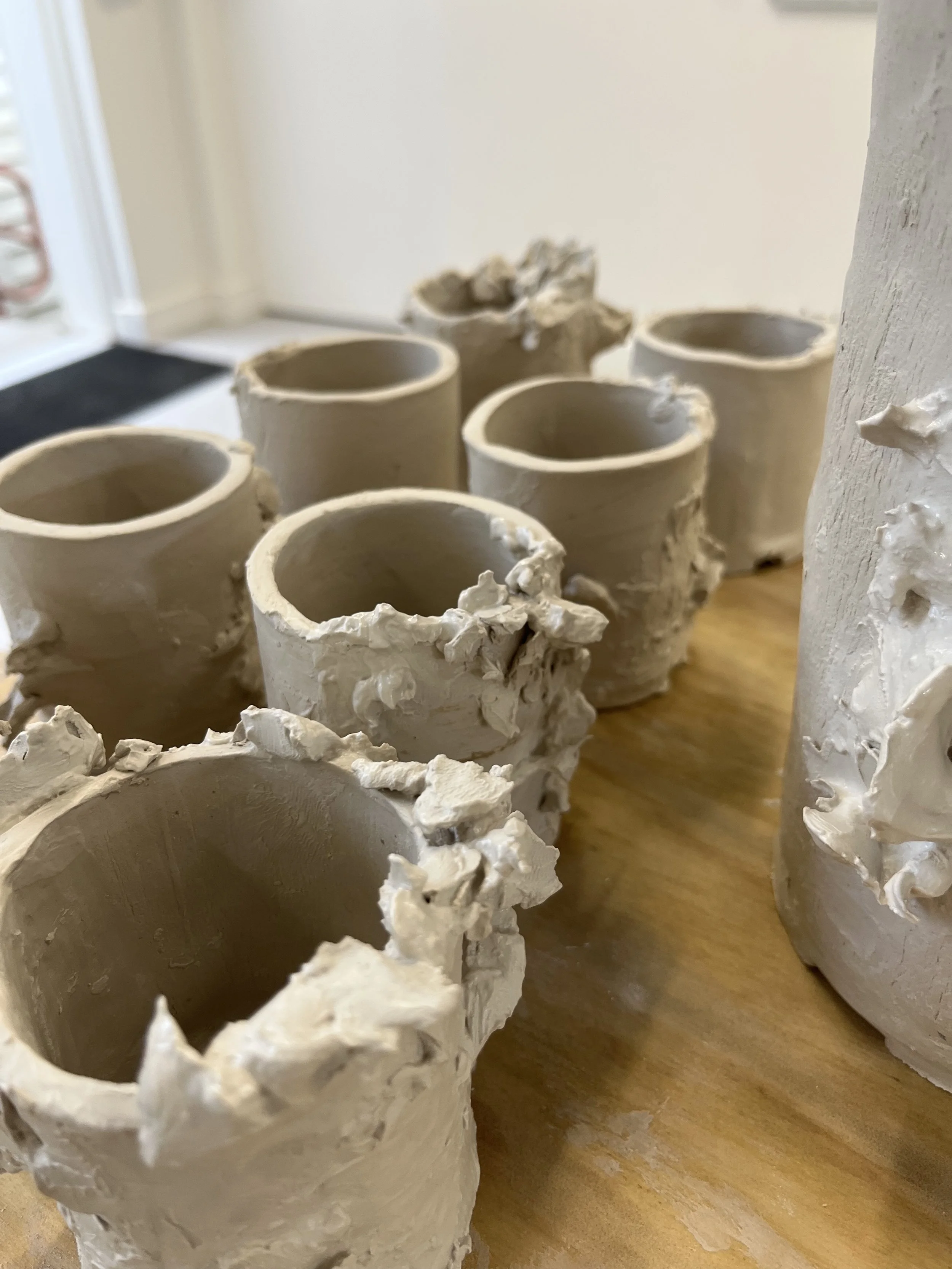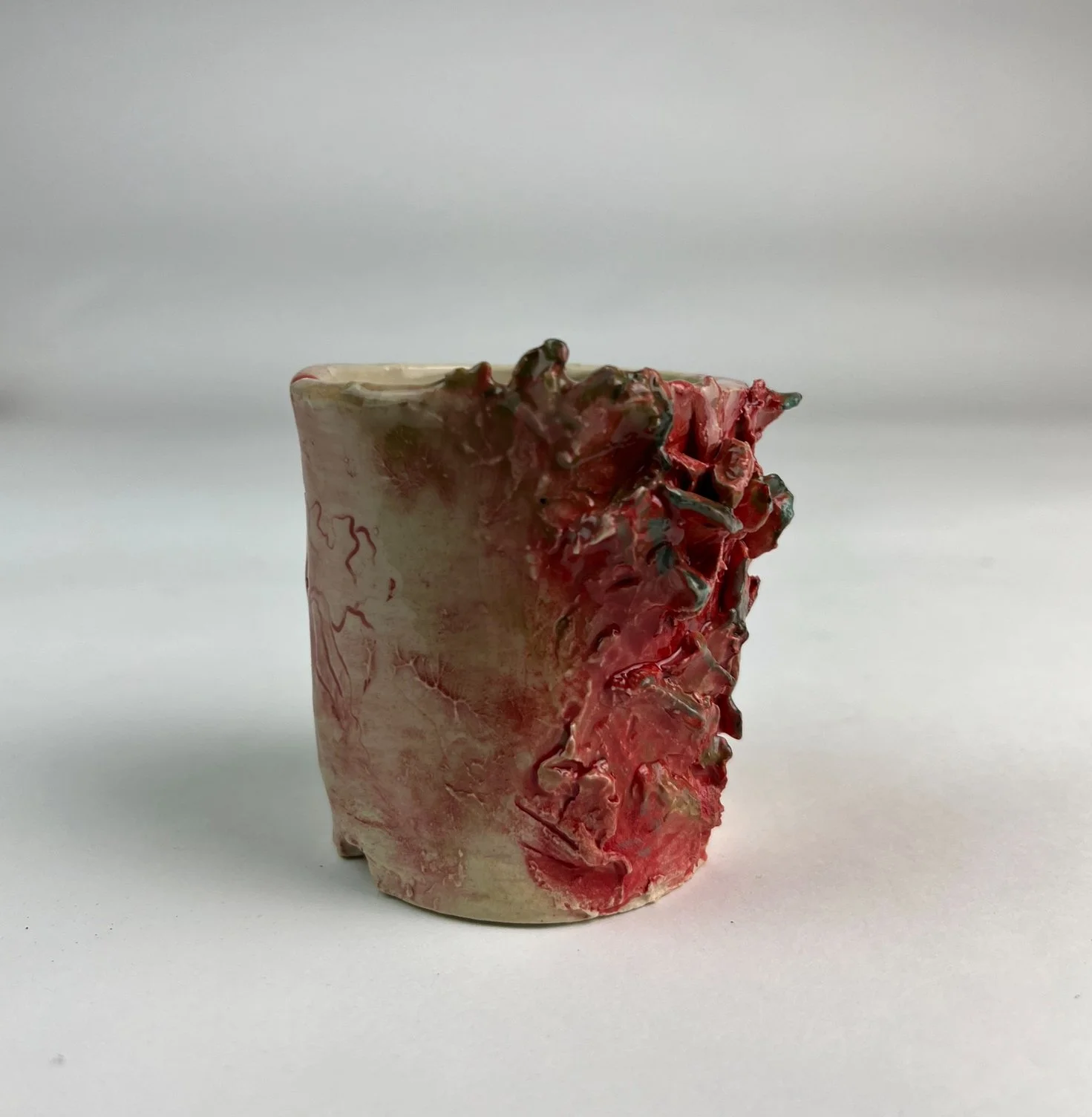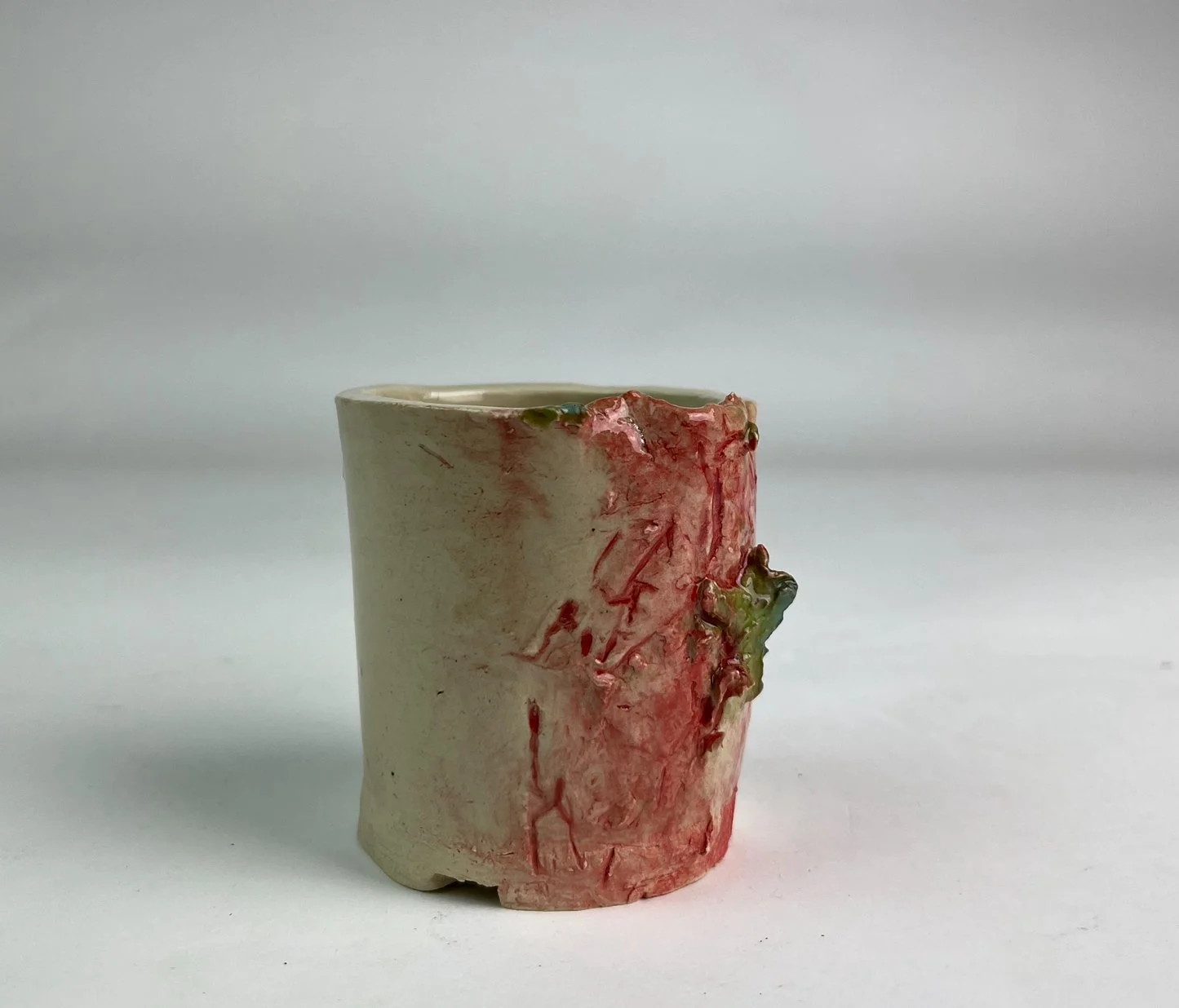‘Host’
Year: 2025
Project Breif
‘Host’ explores the vessel as a metaphor for the human body, unstable, imperfect, and in a constant state of transformation. Through hand-built ceramic forms encrusted with tumour-like growths, the project investigates how physical distortion can reflect internal breakdown, discomfort, and the collapse of containment. The work rejects traditional ideals of function and beauty, favouring irregularity, rupture, and organic excess. Surfaces are scarred, bulging, and raw, formed through experimental slip application and intuitive construction. ‘Host’ invites the viewer to sit with unease, and to reconsider how we see and define the limits of the body.
Process
The initial phase of creating Host began with sketching and mind mapping around the idea of the body as a vessel, focusing on transformation, rupture, and surface tension. From these early concepts, I moved into constructing a series of hand-built vessels using slab and coil techniques. I developed paper templates for the circular bases and rectangular walls to ensure a consistent, symmetrical foundation across each form. These templates provided structure while still allowing space for later disruption. Once the base forms were built, I added simple feet to each vessel, leaving a small central gap to elevate the pieces slightly and suggest a sense of ceremonial function.
With the forms complete, I began applying the first layer of growths—carefully scoring and slipping coils and lumps of clay onto the surface. These additions were shaped and refined using my hands and brushed with a toothbrush to smooth edges and unify the surface texture. At this stage, the vessels were still conceptually linked to themes of mental stress and emotional burden, with the growths acting as externalised manifestations of internal pressure.
Once the forms were bisque-fired, I shifted my focus to surface treatment, using underglaze to create a fleshy, unsettling palette. I worked primarily with reds, pinks, purples, and greens, drawing from medical imagery, infections, and fungal bloom. Greens were concentrated around the extremities to suggest decay or bruising, while raw reds and purples were applied at the bases of growths and within vein-like channels to evoke inflammation and internal trauma surfacing. Pale pinks were used to soften transitions and build depth across smoother areas. To keep the surfaces visually active, I layered slip and underglaze in stages, often letting them pool or streak intentionally. Some sections were stippled or brushed unevenly to mimic blistering or rash-like textures. This intuitive, tactile approach to colour mirrored the organic, uncontrollable quality of the forms themselves, working to further erode the distinction between vessel and body.
Outcome
After applying a light, semi-matte glaze to unify the surface without masking the underglaze detail, the vessels underwent their final firing. The result was a series of distorted, visceral forms that blur the line between body and object. The growths appear to spread and rupture across the vessels’ surfaces, breaking any sense of symmetry or containment. The largest piece in the series provided a focal point for the installation, its scale amplifying the sense of infection and imbalance. Together, the works speak to processes of internal breakdown made external. I was particularly satisfied with how the colour palette performed in the final firing, retaining its layered intensity and organic unpredictability. The series succeeds in unsettling the viewer’s expectations of function and beauty, inviting a deeper engagement with themes of mutation, excess, and transformation.

